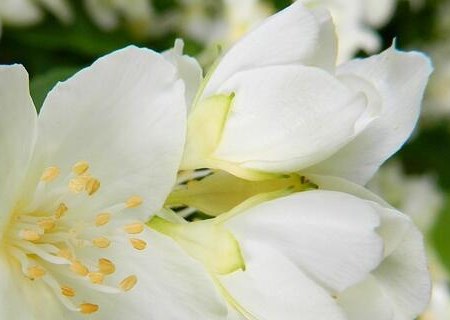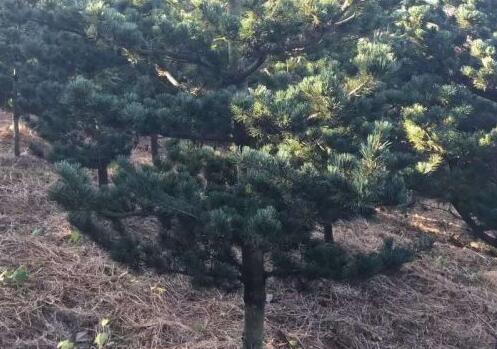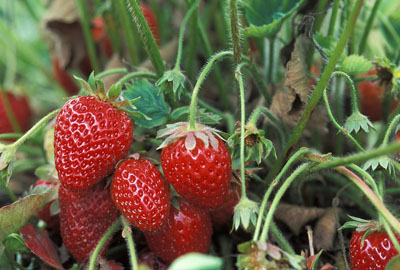What are the methods of planting jasmine seeds of Oleaceae? What are the effects and effects of scented tea? What are the prospects?
Jasmine, Oleaceae, Jasminum belongs to erect or climbing shrubs, jasmine flowers are extremely fragrant, are famous raw materials of scented tea and important flavor raw materials; flowers and leaves are used as medicines to treat red swelling and pain in the eyes, and have the effect of relieving cough and resolving phlegm. Do you know what jasmine seed planting methods are? What are the effects and effects of scented tea? What are the prospects?

First, jasmine seed planting methods and pest control
1. Sowing: in the north, seedlings can be raised in a greenhouse or geothermal seedbed, the seeds can be removed from the seedbed, the ground temperature is controlled at about 20 ℃, and the ground temperature is stopped after emergence. The sowing amount is about 300 grams per square meter of seedbed. When there is a pair of true leaves, the seedlings are transferred once, and a single plant becomes a seedling. 5-7 days before planting, cool down and release the strong wind to refine the seedlings, and plant after the final frost. Can also be on demand in the small arch shed, do not transplant, a seedling, according to 7 cm x 7 cm interval on demand.
2. Soil: if you want jasmine to grow well, it is recommended that the family potted jasmine soil should choose fertile sandy and semi-sandy soil. When planted in the slightly acidic soil with pH 6 to 6.5, the root system is dense and the growth is vigorous, such as heavy clay, lack of matrix, low fertility, poor ventilation, less root system, short plant, slender stems and leaves, and few flowers.
3. Watering: Jasmine is not resistant to drought, but avoid stagnant water. In rainy season, it is necessary to dump stagnant water in the basin in time, otherwise the leaves are easy to turn yellow. In summer, hot and sunny days should be watered twice a day, once in the morning and evening, if the leaves are found to curl and droop should be sprayed on the leaves to promote growth, the rainy season should often loosen the soil, so that there is no water in the basin. Water is watered every few days in spring and autumn. Winter should keep the basin soil moist, too much watering, the roots will be black and rotten, leaves withered and yellow, shedding.
4. Lighting: Jasmine is fond of hot, humid, ventilated and breathable environment, requiring sufficient light. Jasmine is afraid of the cold. Potted jasmine in the south can be cultivated outdoors to survive the winter. In the north, it is necessary to keep warm in autumn and winter, and move indoors and put it toward the south. If the light is strong, the branches are strong, the leaves are dark green, the flowers are many and fragrant, and if the sun is not enough, the flowers are sparse and not fragrant. The stronger the light is, the more developed the root system of jasmine is, the stronger the plant growth is, and the stronger the stress resistance is.
5. Temperature: Jasmine is sensitive to temperature, which requires warm, hot and humid climate and can adapt to higher air temperature, but it is not resistant to low temperature and poor cold resistance. When the temperature is below 10 ℃, jasmine grows very slowly, even stops growing. The buds can sprout at about 19 ℃, the buds can only be conceived at more than 25 ℃, and the buds can form and develop well at 30-40 ℃. If the room temperature is controlled at about 20 ℃ in the air-conditioned room, the opening time of the bud can be delayed by about 10 hours. after removing the low temperature, the room temperature will rise to the suitable temperature for the bud to open, and the jasmine can bloom quickly and the fragrance is pure.
6. Fertilization: the high temperature season in midsummer is the peak period for jasmine growth. More organic fertilizer and phosphorus and potassium fertilizer, such as peanut cake powder, bone powder, calcium superphosphate and multi-element flower fertilizer, are applied twice a month. Jasmine often has luxuriant branches and leaves but does not blossom in summer, the main reason is that too much nitrogen fertilizer is applied, resulting in the growth of branches and leaves. In such a situation, it is necessary to control fertilizer and water, increase the application of phosphorus and potassium fertilizer, and promote the gestation of flower buds. At the same time, we should pay attention to move the jasmine to a place with sufficient sunshine and good ventilation.
7. Prevention and control of diseases and insect pests: Jasmine is often harmed by borer larvae and shell insects and red spiders, which is most serious from July to September. It often eats buds and can be sprayed with almighty powder or permethrin plus water 200 times every semimonthly, that is, no diseases and insect pests should be sprayed, so that it is appropriate to spray at 9 am and 4 pm on a sunny day, and it is not suitable to spray in the hot sun at noon to prevent drug damage.
Second, the efficacy and function of jasmine tea
Jasmine has the effect of "regulating qi to open depression, eliminating filth and middle", and has a good anti-inflammatory and detoxifying effect on dysentery, abdominal pain, conjunctivitis and sore toxin. Jasmine flower has clearing liver and eyesight, invigorating body fluid and relieving thirst, dispelling phlegm and dysentery, passing convenient water, dispelling wind and relieving surface, treating fistula, strengthening teeth, tonifying strength, lowering blood pressure, strengthening heart, preventing dental caries and radiation damage. Jasmine has the effect of anti-cancer and anti-aging, which makes people live longer and have physical and mental health.
1. The opening of the spirit. The volatile oily substances contained in jasmine flowers have the effects of relieving qi and relieving pain, relieving depression and dispersing knots, and can relieve chest and abdominal pain, diarrhea and other symptoms, so it is a good food for relieving pain.
2. Anti-bacterial and anti-inflammatory. Jasmine flower has inhibitory effect on a variety of bacteria, internal and external use, can treat red eyes, sores, skin ulcers and other inflammatory diseases.
Third, what are the prospects for planting jasmine
According to a farmer who has been growing jasmine for many years, his income from growing jasmine is OK, because jasmine can be harvested every day, but the amount of harvest varies from more or less.
To grow jasmine, as long as it is fertile land, it is easy to plant and harvest. It takes about 3 to 4 months for jasmine seeds to be harvested, and they can be harvested every day, but if the weather is cold, it is not easy to grow flowers.
He went on to say that jasmine flowers can now sell for 10,000 riels (about $2.50) a kilogram on the market, but they can be sold more expensive if there is a holiday, reaching a price of 12000 or 13000.
He said that growing jasmine requires only a few pesticides, because it is only to prevent insects. It can be said that he does not have to spend too much time to take care of them, and they are strong in vitality and easy to harvest. It is the source of the daily livelihood of his family.
Time: 2019-03-18 Click:
- Prev

Is it suitable to plant five-needle pine in the courtyard at home? How much is the seedling price? What are the key points for maintenance? Potted landscape system
Five-needle pine Japanese five-needle pine, five-needle pine, Japanese five-needle pine, get the name because of the five leaves, there are many varieties of five-needle pine, originated in Japan, China has a long history of introduction, widely cultivated in various places. So is it appropriate to plant five-needle pine in the courtyard of your home? How much is the seedling price? What are the key points for maintenance? What are the methods of making bonsai?
- Next

How much does the "Queen of Fruits" strawberry seed cost? When to sow? When will it mature? how to plant
Strawberry, also known as raspberry, ground berry, ground fruit, cranberry, pear, is a common fruit in our country, generally listed during May 1, and the price is small expensive, so many people are planted, how much is the strawberry seed? When to sow? When will it mature? How to plant explosion
Related
- Fuxing push coffee new agricultural production and marketing class: lack of small-scale processing plants
- Jujube rice field leisure farm deep ploughing Yilan for five years to create a space for organic food and play
- Nongyu Farm-A trial of organic papaya for brave women with advanced technology
- Four points for attention in the prevention and control of diseases and insect pests of edible fungi
- How to add nutrient solution to Edible Fungi
- Is there any good way to control edible fungus mites?
- Open Inoculation Technology of Edible Fungi
- Is there any clever way to use fertilizer for edible fungus in winter?
- What agents are used to kill the pathogens of edible fungi in the mushroom shed?
- Rapid drying of Edible Fungi

